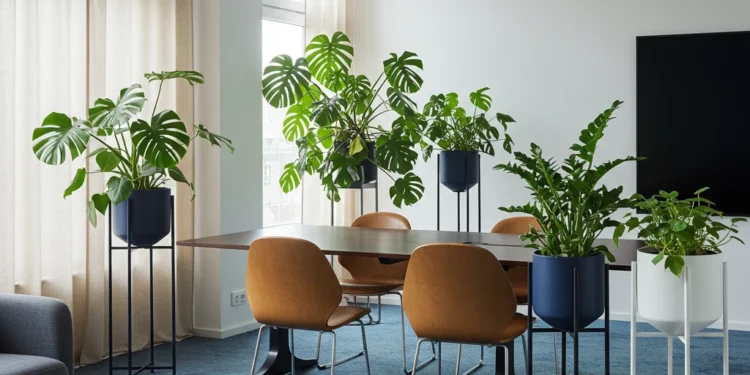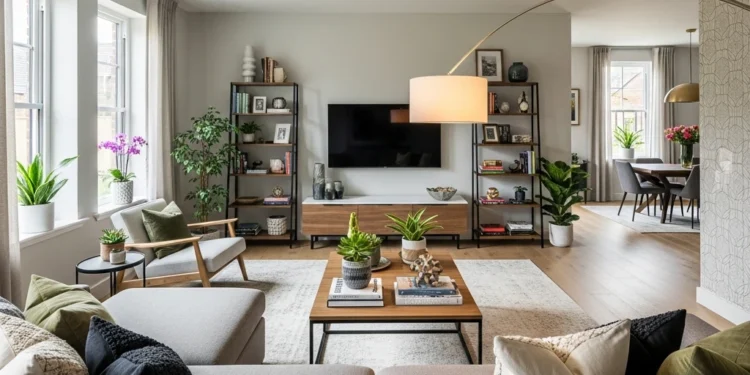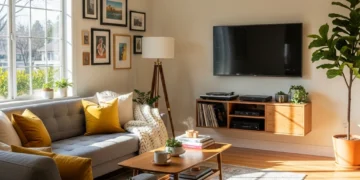In an increasingly fast-paced and urbanised world, the spaces we inhabit have a profound influence on our emotional and physical health. Our interiors, whether at home, work, or in public environments, can either deplete or replenish our mental well-being.
This is where nature-inspired décor plays a vital role. Drawing from the principles of biophilic design and environmental psychology, nature-themed interiors don’t just offer visual appeal. They have the potential to transform how we feel, think, and interact within a space.
Human Biology Responds Positively to Nature
At the heart of nature-inspired décor lies biophilia, a concept that describes our innate tendency to seek connections with the natural world. As humans, we evolved in nature, and though modern lifestyles have moved indoors, our biological responses to natural stimuli remain unchanged.
When we surround ourselves with representations of nature, be it in the form of materials, textures, colours, or imagery, our minds register a sense of comfort and familiarity. This connection helps regulate our emotional state, ease mental fatigue, and restore our focus after periods of stress or overstimulation.
Natural Aesthetics Are Proven to Reduce Stress
One of the most well-documented benefits of nature-inspired décor is its ability to reduce stress. A study on the healing power of biophilic design found that incorporating natural elements significantly reduces stress indicators such as cortisol levels, heart rate, and blood pressure.
When interiors mimic the calming aspects of nature—gentle curves, soft lighting, earthy tones, and natural materials—they create a soothing environment that promotes relaxation. Even symbolic representations like landscape art, botanical prints, or the texture of raw wood can elicit a calming response.
Nature-Based Elements Sharpen Focus and Boost Creativity
Beyond relaxation, nature-inspired interiors can sharpen the mind and foster innovation. Research has found that exposure to natural elements, whether real or symbolic, enhances attention span, memory, and problem-solving ability.
This is particularly useful in environments designed for learning or productivity. Classrooms, offices, and creative studios all benefit from the mental clarity brought about by natural influences. Natural motifs, like the branching patterns of trees or the rhythmic repetition of waves, stimulate the brain in subtle ways. This can lead to improved cognitive performance and a more inspired state of mind.
Colours and Textures Found in Nature Support Emotional Balance
The emotional impact of a space is shaped largely by its use of colour and texture. In nature-inspired design, colours such as green, brown, and blue dominate, each carrying powerful psychological associations. Green, often linked to growth and renewal, brings balance and harmony. Blue, reminiscent of the sky and sea, evokes calm and trust.
When these hues are paired with natural textures like stone, timber, or linen, they create multisensory environments that feel grounded and authentic. Unlike synthetic materials or stark modernist finishes, these tactile elements bring warmth and humanity into a room. This supports emotional resilience and comfort.
Nature-Inspired Art Offers an Accessible Connection to the Outdoors
Not every space can incorporate live plants, daylight, or panoramic views of the outdoors. In such cases, art becomes an essential medium for introducing natural elements. Visual art depicting flora, fauna, or scenic landscapes offers a powerful psychological link to the natural world.
A single statement piece can evoke entire environments such as beaches, rainforests, or mountain vistas. This fosters an emotional escape from the immediate surroundings. For instance, incorporating tropical art prints can bring vibrancy, freshness, and a sense of place, connecting viewers to distant natural settings that promote calm and inspiration.
Embracing Nature Indoors for a Healthier, Happier Life
Nature-inspired décor is more than a design preference. It is a strategy for enhancing human well-being. By tapping into our deep-seated connection with the natural world, these design choices promote relaxation, boost cognitive function, and foster emotional balance.












